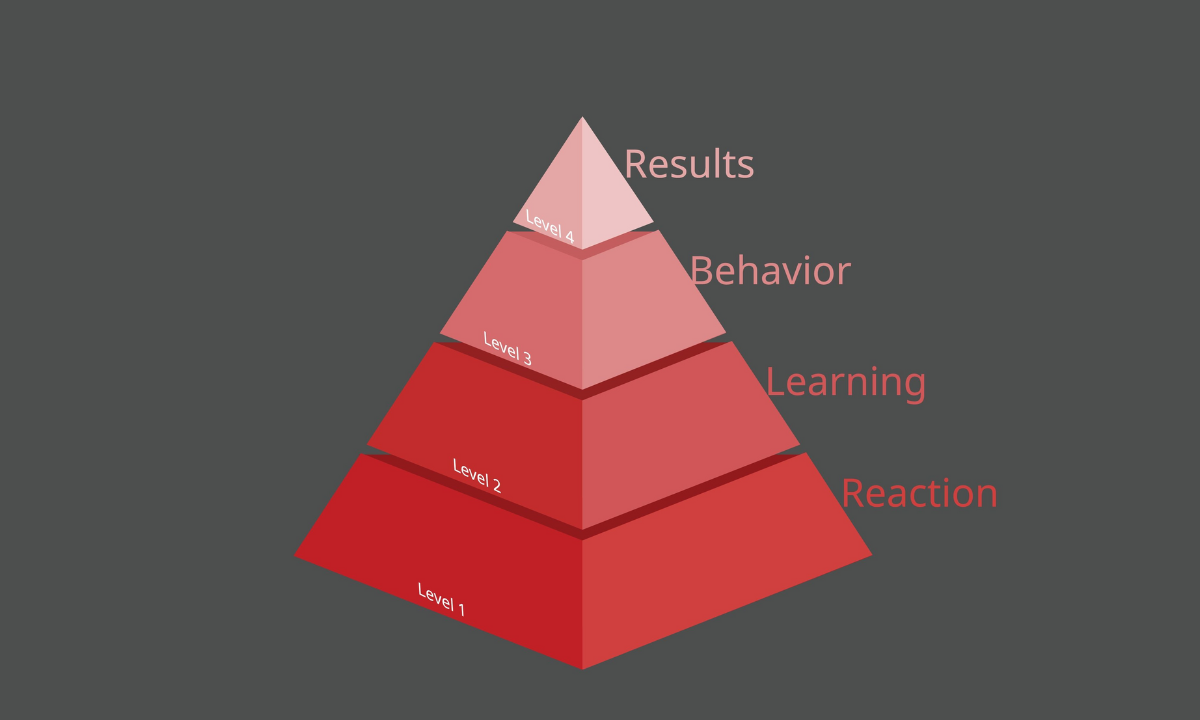The Kirkpatrick scale is a framework for evaluating the effectiveness of training programs. It was developed by Dr. Donald Kirkpatrick in the 1950s and consists of four levels:
- Level 1: Reaction – This level measures the learner’s reaction to the training program, including their overall satisfaction and perceptions of the program’s value.
- Level 2: Learning – This level measures the extent to which learners have acquired the knowledge and skills taught in the training program.
- Level 3: Behavior – This level measures the extent to which the training program has resulted in changes in the learner’s behavior, such as the use of new skills on the job.
- Level 4: Results – This level measures the impact of the training program on the organization, such as increased productivity or profitability.
The Kirkpatrick scale can be applied to eLearning programs by evaluating them at each of these levels. For example, you can measure learners’ reactions to the eLearning program through surveys or focus groups, assess their learning by testing their knowledge and skills, track changes in their behavior on the job, and measure the results of the training program for the organization.
By evaluating eLearning programs using the Kirkpatrick scale, you can get a comprehensive understanding of their effectiveness and determine whether they are meeting the desired learning objectives.
